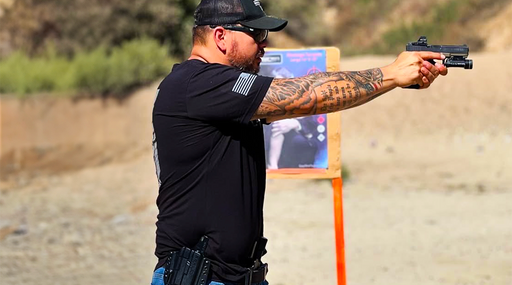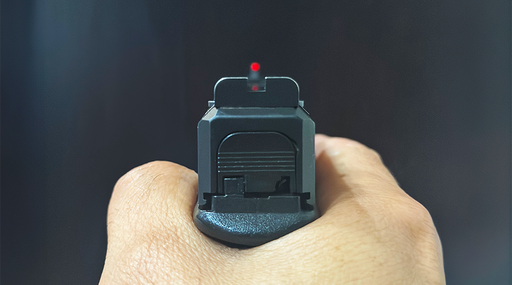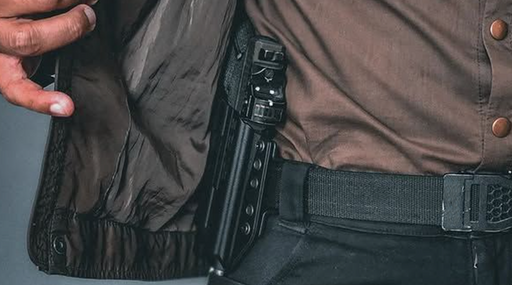
In the first installment of this two-part series on securing the house of worship, we discussed the classification of likely threats to safety. Please read that article first. As before, “church” is the term used here to encompass any faith-based establishment, and it refers to both the physical and human body of that house, as applicable.
This half of the series gives considerations for making a plan, which I’ve categorized into two pieces: hardening the physical target and mobilizing people. A third factor, culture, is an over-arching and undeniably influential factor that each faith community will couch its efforts within.
Harden the Target
Have a check/double check procedure for the locks of every entrance to the facility. Install exit-only doors throughout as soon as the budget permits. Entrances left unlocked before and during church services should be monitored by greeters. Entrances should be promptly locked after a walk-through when services conclude and people leave.
Plan ahead to identify escape routes in addition to the entrance(s) most people use. Ensure they are not blocked when services are underway. Volunteer security team members should be prepared to guide people to these exits. This serves safety purposes beyond a violent attack. Fires and some natural disasters are also good reasons to have multiple exits and a plan to use them.

Identify areas of hard cover that people or children who cannot escape, in the case of an active shooter event, can hide behind. Have tools for locking down doors and ensure staff have immediate access, willingness, and the knowledge to use them. There are many methods for this and many are free or use existing resources like chairs or belts.
Other considerations apply to church offices that are open during the week. As with many offices, the receptionist is usually the most vulnerable person. Ways to not be cornered, to get behind cover, and to control access into the building should be discussed and acted upon by church leadership.
Cameras have little deterrent effect in today’s world, and constantly monitoring them in a timely fashion is an unrealistic expectation They should be considered an aid to solving crime, not prevention.
A door-securing protocol is key, but not in fallible, usually thanks to staff activity. Necessity, i.e. moving loads into or out of the building, convenience, a sense of entitlement, and complacency can lay waste to the best protocols. Do not let exceptions become common.
Selection, Training, Procedures for Staff and Volunteers

The first church members that a person encounters upon entry, i.e. greeters, ushers, and the like, should be selected in part on their willingness and ability to identify potential problem individuals and, when necessary, “ride herd” on that person, perhaps by staying by their side during the entire service, and selecting seating locations that limit that person’s access to the crowd or the podium/alter area where most choose to stage violent acts. This could be framed as showing a troubled person so much love that it's simply too much work to be violent.
Some who are reading this may be under the incorrect assumption that a good violence prevention greeter or usher is always a young-ish male. We have all seen some people who respond better to younger or older mentors, or better to women or men. Physical stature is not necessarily a requirement to be a good identifier of pre-attack indicators, a good communicator capable of re-framing or deescalating disruptive tendencies.
Contracted, uniformed security is an option if the budget allows. There are advantages to having a neutral party patrol the area and not feel the need to attempt to feed their own spiritual needs while looking out for problems. And the sight of a guard is a deterrent effect for some offenders. But for the most dangerous ilk, an armed guard is simply the first obstacle to eliminate or slip by, as they cannot be everywhere all the time.
Volunteers within the church are often eager to take security into their own hands, and derive unrealistic confidence from having a gun while paying little mind to the value of early identification and re-direction of a threat.
Armed volunteers should have had a background check and undergo regular training, including scenario and post-incident training. They should be able to pass a typical police shooting qualification. Armed and unarmed people who are willing to perform post-incident response (stop massive blood loss; communicate effectively but minimally with first responders) should be trained to stop massive blood loss and carry or have access to quality tourniquets that will fit the smallest to largest church attendees. (Ironically, most people who aren’t interested in carrying a gun are also not interested in learning to stop blood loss, but it never stops me from offering the training).
Be aware that some attendees who are not security volunteers might produce guns of their own from concealment during a critical incident. The sight of a gun is NOT an automatic indicator to shoot! By the same token, volunteers should be adept at gun handling in a place where there is no safe direction to aim the muzzle. Gun handling should encompass more training time than marksmanship for most people, especially those who have thoughts of protecting lives beyond their own families.
There are many examples today of good and legal procedures and ways to document who is permitted to pick up children from church. Find one and use it in a way that makes sense for your church’s programs.
Especially in churches where non-members can wander in from the street and use restrooms, do not allow children to go into bathrooms alone. In some cases, adults should go accompanied as well. A volatile person is much less likely to act out when there are witnesses.
Last but not Least, Culture!

Every security plan for a church is couched within its church culture. Some leadership styles are more conducive to a solid security plan than others. Every plan will require adjustments over time.
Churches that want to engage in a robust volunteer team should plan in investing in training and hold members accountable for participation. It will come as no surprise to church leaders that interest in a volunteer security effort can wane over time. It’s helpful to build both expectations and rewards into the program.

Pastors, priests, rabbis, etc. who take a primary leadership role in security can be effective if they acknowledge that they alone are often the target of violence, and like any other individual, have a limited view of what’s going on in the building, and thus should share or allocate responsibility.
Team leaders should decide how to communicate with the congregation at large about responding to threats. In some congregations, concealed carriers outnumber security volunteers or paid guards. This can be both an asset and a risk. In geographic areas where hoplophobia reigns, it may be upsetting to the church body to even disclose the presence of an armed volunteer or to hire a guard. Church cultures that take an uninformed view of violence are likely to fail at preventing or effectively dealing with it.
In Conclusion






















Leave a comment
1 comment
Outstanding. A lot to consider. Very informative. Thank you!!